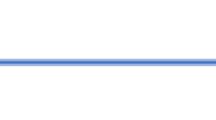Abstract
Pulier (2000, Theory and Decision 49: 291) and Machina (2000, Theory and Decision 49: 293) seek to dissolve the Barrett–Arntzenius infinite decision puzzle (1999, Theory and Decision 46: 101). The proposed dissolutions, however, are based on misunderstandings concerning how the puzzle works and the nature of supertasks more generally. We will describe the puzzle in a simplified form, address the recent misunderstandings, and describe possible morals for decision theory.
Similar content being viewed by others
References
Barrett J. A. and tzenius, F. (1999), An ifinite decision puzzle, Theory and Decision 46(3): 101–103.
Earman, J. and Norton, J.D. (1996), Infinite pains: The trouble with supertasks, in A. Morton and S. Stich (eds.), Benacerraf and His Critics, pp. 231–261. Oxford: Blackwell.
Laraudogoitia, J.P. (2000), Spacetime: Supertasks, in E.N. Zalta (ed.), Stan-ford Encyclopedia of Philosophy, http://plato.stanford.edu/entries/spacetime-supertasks
Machina, M. J. (2000), Barrett and Arntzenius's, infinite decision puzzle, Theory and Decision 49(3): 293–297.
Pulier, M. L. (2000), A flawed infinite decision puzzle, Theory and Decision 49(3): 291–292.
Author information
Authors and Affiliations
Rights and permissions
About this article
Cite this article
Barrett, J.A., Arntzenius, F. Why the Infinite Decision Puzzle is Puzzling. Theory and Decision 52, 139–147 (2002). https://doi.org/10.1023/A:1015564123344
Issue Date:
DOI: https://doi.org/10.1023/A:1015564123344



